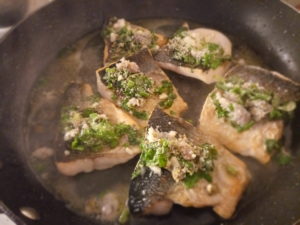Fish from aquaculture is becoming more significant for human consumption. Demand of aquaculture products has steadily increased and global seafood consumption has doubled over the last 15 years. In European Union, per capita consumption reached 24.3 kg in 2016 (Eumofa 2018), but still only around 24% of consumption originates from aquaculture.
 The majority of Europeans (70%) eat fishery and aquaculture products at home regularly, at least once per month. Respondents from countries surrounded by water, and by more readily available sources of fish, are more likely to say they eat sea food at least once a month, compared with those from land-locked countries. A majority of respondents who buy or eat seafood say they buy these products because of healthiness (74%) and good taste (59%) (Eurobarometer 2018).
The majority of Europeans (70%) eat fishery and aquaculture products at home regularly, at least once per month. Respondents from countries surrounded by water, and by more readily available sources of fish, are more likely to say they eat sea food at least once a month, compared with those from land-locked countries. A majority of respondents who buy or eat seafood say they buy these products because of healthiness (74%) and good taste (59%) (Eurobarometer 2018).
Communication to raise awareness
The analysis of international campaigns on aquaculture (p.a.u. education, 2014) reviewed 85 campaigns that had a broad aim of promoting aquaculture products. The main message from the results was that
- There is a general lack of consumer knowledge and understanding of aquaculture.
- Aquaculture is often presented as a unified homogenuos sector. This can cause messages to be contradictory by not differentiating between the wide diversity of species and production methods. It seems that generic messages are not sufficiently unique to promote specific products.
- Overall, there are two general areas in campaigns for aquaculture promotion. One is directed at the specific products, and one to increase the visibility of aquaculture in broader campaigns about sustainability, healthy diets and responsible consumption.
The study shows that there is a gap in information about how modern aquaculture functions. The authors suggested that most campaigns should highlight their necessary role, and the degree of environmental impact and sustainability of aquaculture. One of the fundamental part is not to omit transparency and communicating the real risks of some practices (p.a.u. education, 2014).
AquaIMPACT is one of the actors among many to distribute information on aquaculture practices, especially by communicating the AquaIMPACT developments on breeding and feeding strategies, to increase awareness of consumers, regulatory authorities, and the seafood related industries.
References
EUMOFA. 2018. The EU fish market. 2018 Edition. The European Market Observatory for Fisheries and Aquaculture Products.
EUMOFA.2017. EU Organic Aquaculture. http://www.eumofa.eu/documents/20178/84590/Study+report_organic+aquaculture.pdf
p.a.u education. 2014. Communication Campaign on Aquaculture in the EU: Analysis of International Campaigns on Aquaculture MARE/2012/12-Lot 1: Information and communication activities. July 2014. https://ec.europa.eu/fisheries/sites/fisheries/files/docs/body/2015-03-10-analysis-of-international-campaigns-on-aquaculture_en.pdf
Special Eurobarometer 475. EU consumer habits regarding fishery and aquaculture products. Publication December 2018.
